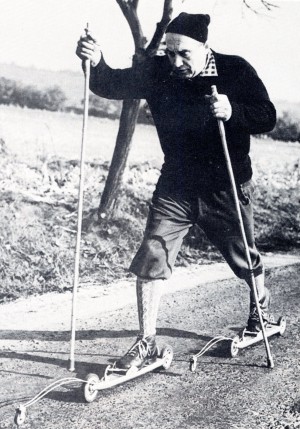Five Ways To Start Your Fitness Program.

No more procastination. You have from six weeks to three months, depending on where you live, to get ready for snow season. If you are a year-round sports activist, then good on you. If you are a part-timer, weekend warrior, you probably have to start getting more diverse muscles toned up. If you are as not as active as you could be, reflect on your habits. You will be safer and feel better when you head out to slopes or trails if you are physically toned. It is a huge mistake to go from zero to a ski run or cross-country trail without being physically prepared, especially if you are one of those people who distinctly remember the Beatles on their first Ed Sullivan Show appearance.
Here are five ways to begin, especially if you’ve been off your program for whatever reason this summer.
1. Walk. Simple. Morning, lunchtime, or evening. Walk fast, swing your arms, work up a sweat, carry light weights (2 pounds) or walk with ski poles (Nordic walking burns more calories), use a pedometer, keep a record of how far and how many steps. After a week or so of daily walking, the “training effect” will kick in, and you will feel looser, more steady and, guess what, you’ll be outside in the beautiful Autumn weather. Here are some guidelines for getting started.
2. Stretch. Loss of elasticity of connective tissue, an effect of the aging process, can be nasty. Muscles tighten up, and back and joint problems ensue. Stretching makes a difference. Learn to stretch your hamstrings, quads, hip flexors, and lower back. There are many resources you can access for how-to. Here is a good starter from the NIH. There’s always yoga. This is really, really important: If you aren’t using it, you’re losing it.
3. Gym Class. Going to a class led by a trainer provides structure, discipline and challenge. An hour-long class will probably keep you in more motion than the same time spent alone in your basement. In a good gym class, you will also learn about the muscles you are exercising, how to stretch them and gradually build up strength and flexibility all over your body, not just your favorite parts. Probably most important, you will learn proper form so you get the most out of your efforts and help prevent injuries. SeniorsSkiing.com’s Harriet Wallis wrote about Silver Sneakers, a national program sponsored by insurance company targeting seniors. There’s probably one near you.
4. Focus on four essentials. No gym nearby? If you do head down to your basement or studio for exercises, here are four to get you going: Lunges for legs, lower back, hips, Plank for core and probably one of the two top exercises of all, Pushups for core, upper body and arms, and the other top exercise, and Squats, a fundamental leg and back strengthener. You must learn to do these correctly; form counts for everything. Doing a zillion reps without proper form is not that effective and could get you hurt.
5. Get an app or two. There are many apps you can get for your smartphone that can be your training buddy. This link has a few of many. Point is you will able to get feedback on how you are doing and see progress using a cool app. And in a strange way, the app builds an expectation. Just like the GPS voice in your car, you can have a relationship with your app.
As usual, see your doctor before trying any of this, or if you start a program, and it doesn’t feel good. Remember this is meant to be a starter kit. Stay tuned for more advanced fitness activities.
Now, don’t hesitate, get going. What’s your advice?











